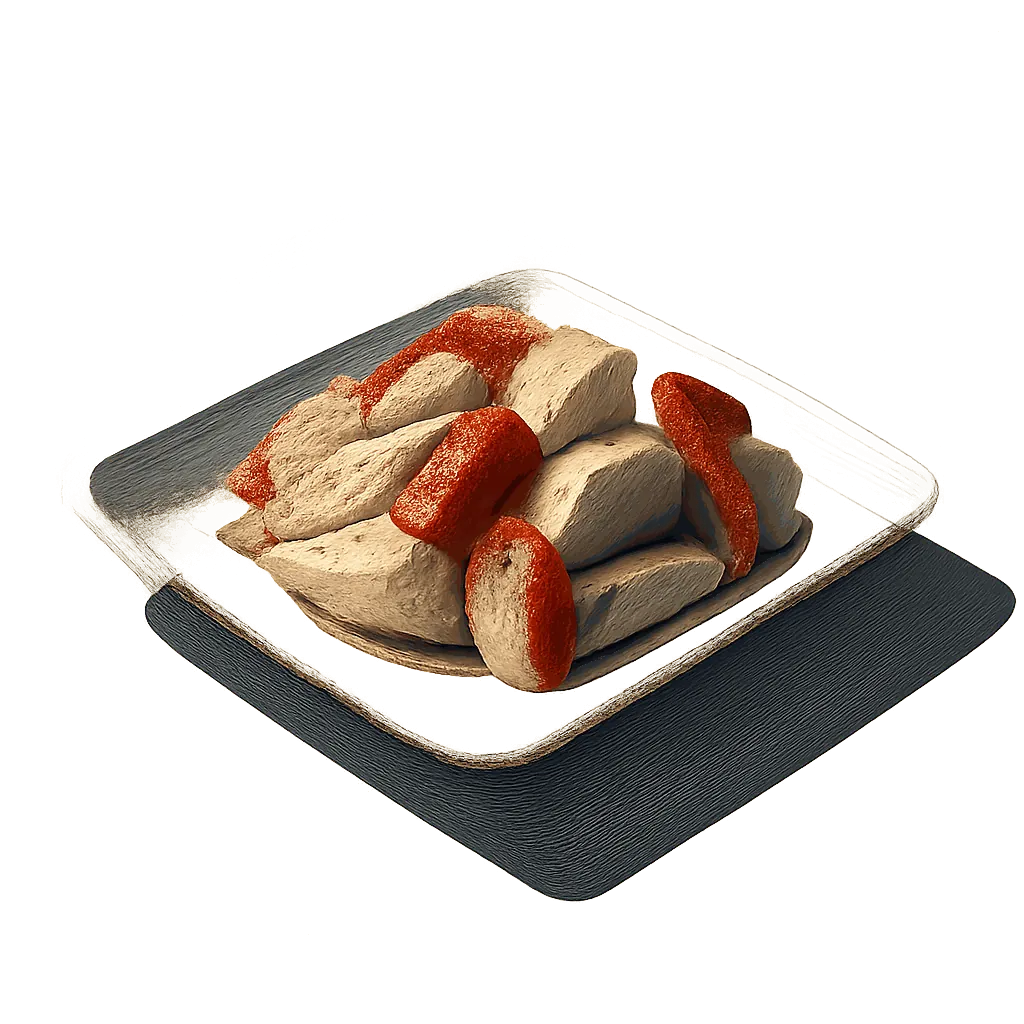Perfect Pairings & Recipes for
Blanc De Blancs

Discover the best flavour pairings for Blanc de Blancs based on data analysis of thousands of recipes. Find perfect ingredient matches & delicious recipes.
Blanc de Blancs immediately conjure the evocative embrace of cedar and the bracing kiss of sour apple, woven with delicate hints of yeast, chalk, and flint, contributing remarkable depth. The key to a remarkable pairing lies in knowing how these elements interact and harmonise.
To illuminate these harmonies, we embarked on an ambitious journey, analysing thousands of ingredients. Each was meticulously deconstructed across 150 distinct flavour dimensions, allowing us to pinpoint precisely which notes complement in both classic and unexpected ways. Our exploration reveals, for instance, how the fatty, oily oleic acid in vegetable oil can enrich Blanc de Blancs, and how fish stock's iodine-like notes forge a beautiful synergy with its crisp tartness.
Flavour Profile Of Blanc De Blancs Across 150 Dimensions Of Flavour
Flavour wheel chart showing the dominant flavour notes of Blanc de Blancs: Malic, Cedar, Limestone, Yeasty, Elderflower, Flint, Blossom, Coconut, Petrichor, Lychee, Butyric, Violet, Plum, Pineapple, Tea-Like, Graphite, Pear, Passionfruit, Corn, Toasted, Rose, Coriander seed, Jasmine, Hibiscus, Buttery, Peach, Citric
An ingredient's flavour profile is determined by its core characteristics (e.g. acidic, floral, and maillard) enhanced by layers of subtle aroma notes (outer bars). When pairing ingredients, aim for a mix of core traits to build balance, and select complementary aroma notes to create harmony.
The Flavour Code
To understand how flavour notes harmonise, we analysed more than 50,000 popular ingredient combinations. By exploring these pairings, we identified specific flavour notes that frequently occur together, indicating they share a harmonious relationship.
The Flavours That Harmonise With Malic Notes
Strength of Association Between Flavours
The flavours most associated with malic notes are: Oyster, Fatty, Fishy, Seaweed, Saline, Rosemary, Asparagus, Porcine, Onion, Mustard, Oceanic, Pine, Thyme, Buttery, Sage.
Our analysis reveals a strong connection between sour apple and oyster flavours. Since Blanc de Blancs has a distinct malic flavour, try pairing it with the oystery flavours of fish stock.
The recipe below provides inspiration for pairing Blanc de Blancs with fish stock.
Harmonious Flavours Of Blanc De Blancs
Just as our analysis revealed that sour apple and oystery flavour notes are often used together, we can identify the full profile of flavours that harmonise with each of the notes present in Blanc de Blancs. For instance, the chalky notes of Blanc de Blancs are strongly associated with coffee-like and cocoa flavours.
The aroma notes complementary to the various aroma notes of Blanc de Blancs can be seen highlighted in the pink bars below.
Flavour Profile Of Blanc De Blancs And Its Complementary Flavour Notes
Flavour wheel chart showing the dominant flavour notes of Blanc de Blancs: Malic, Cedar, Limestone, Yeasty, Elderflower, Flint, Blossom, Coconut, Petrichor, Lychee, Butyric, Violet, Plum, Pineapple, Tea-Like, Graphite, Pear, Passionfruit, Corn, Toasted, Rose, Coriander seed, Jasmine, Hibiscus, Buttery, Peach, Citric
Matching Flavour Profiles
The flavour profile of vegetable oil offers many of the notes complementary to Blanc de Blancs, including oleic and seedy aroma accents. Because the flavour profile of vegetable oil has many of the of the features that are complementary to Blanc de Blancs, they are likely to pair very well together.
Prominent Flavour Notes Of Vegetable Oil Are Represented By Longer Bars
Flavour wheel chart showing the dominant flavour notes of Vegetable oil: Oleic, Seedy, Cucumber, Ovine, Adipose, Corn, Grassy, Mustard, Sesame, Rice
The chart above shows the unique profile of vegetable oil across 150 dimensions of flavour, while the recipes below offer inspiration for bringing these flavours together with Blanc de Blancs.
Recipes That Pair Blanc De Blancs With Vegetable Oil
Linked Flavour Notes
Looking at the notes that are most strongly associated with the various flavours of Blanc de Blancs, we can identify other ingredients that are likely to pair well.
Blanc De Blancs's Harmonious Flavours And Complementary Ingredients
Blanc de Blancs's Strongest Flavours
Complementary Flavours
Ingredients with Complementary Flavours
Flavour groups:
Nectarous
Acidic
Floral
Herbal
Spice
Vegetal
Maillard
Earthy
Carnal
The left side of the chart above highlights the aroma notes of Blanc de Blancs, along with the complementary aromas associated with each note. While the right side shows some of the ingredients that share many of the aroma notes complementary to Blanc de Blancs.
Prominent Pairings
Our analysis identifies dishes that pair well with Blanc de Blancs and highlights the prominent ingredient combinations within these recipes. Key pairs include paprika and dried shrimp offering marine aroma, Madras curry powder and fennel seed for sweetness, lemongrass and garlic for garlicy depth, and olive oil and cucumber for a complex cucumber undertone. Explore these combinations to unlock Blanc de Blancs's hidden complexity, reveal deep nuance, and elevate its vibrant character.
Ingredient Combinations Among Dishes That Pair With Blanc de Blancs
Flavour groups:
Sweet
Sour
Botanic
Herbal
Spice
Vegetal
Bitter
Which Herbs Go With Blanc De Blancs?
Choose herbs that lift its yeastiness or infuse with its fresh nuttiness. Sea purslane offers vibrant, clean counterpoints, its verdant freshness lifting the palate. Samphire add a gentle, oniony brightness, while parsley introduces a sophisticated, anise-tinged elegance.
Alternatively, embrace herbs that harmonise with Blanc de Blancs's floralness. The addition of lemon thyme, with its subtle citric notes, can complement the elderflower beautifully. Tarragon bridges earthiness and citrus zest, while nasturtium lends a zesty aroma.
How Flavonomics Works
We've pioneered a unique, data-driven approach to decode the intricate art of flavour pairing. Our goal is to move beyond intuition and uncover the science of why certain ingredients harmonise beautifully. This rigorous methodology allows us to provide you with insightful and reliable pairing recommendations.
Our analysis begins with over 50,000 carefully selected recipes from acclaimed chefs like Galton Blackiston, Marcello Tully, and Pierre Lambinon. This premium dataset ensures our model distils genuine culinary excellence and creativity.
Each ingredient from these recipes is deconstructed across 150 distinct flavour dimensions, creating a unique numerical "flavour fingerprint." This quantification allows us to apply advanced analytical methods to identify complex patterns between flavour notes.
We identify popular ingredient combinations that frequently appear in our recipe database. Regression analysis is then performed on these pairings to statistically validate and pinpoint truly harmonious flavours.
These insights drive our predictive model, which allows us to take any ingredient (e.g., Blanc de Blancs), analyse its detailed flavour profile, and accurately reveal its complementary flavours and perfect ingredient partners.
Explore More
Discover more ingredient profiles and expand your culinary knowledge. Each ingredient page offers detailed analysis of flavour profiles, pairing insights, and culinary applications.
The content on our analysis blog is semi-automated. All of the words were manually written by a human, but the content is updated dynamically based on the data.


